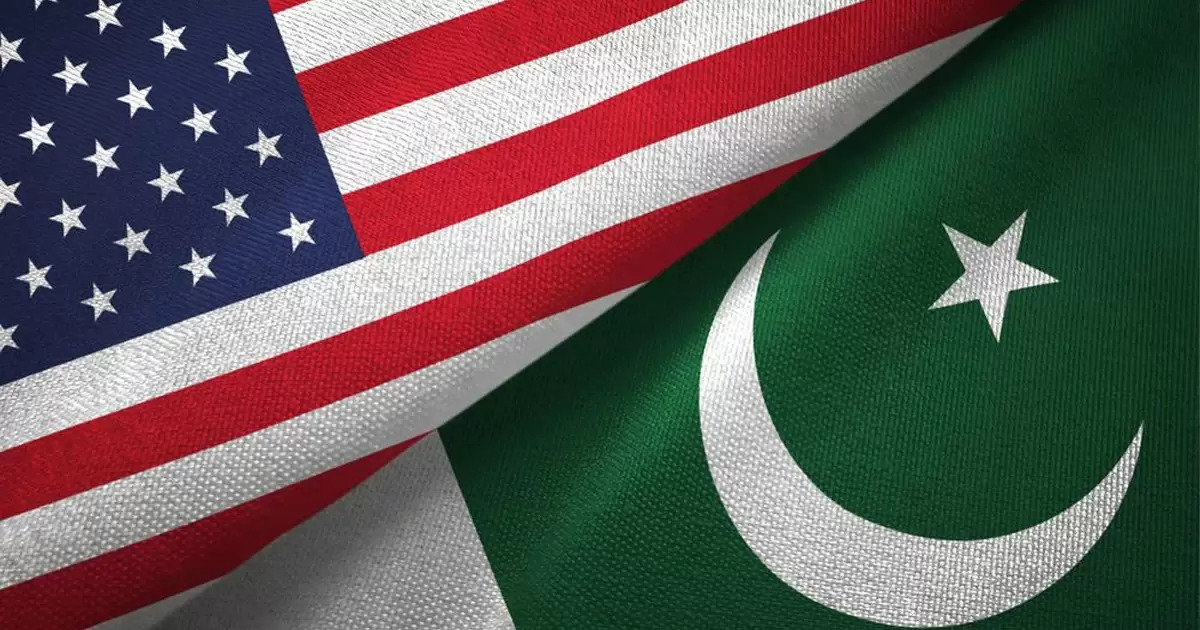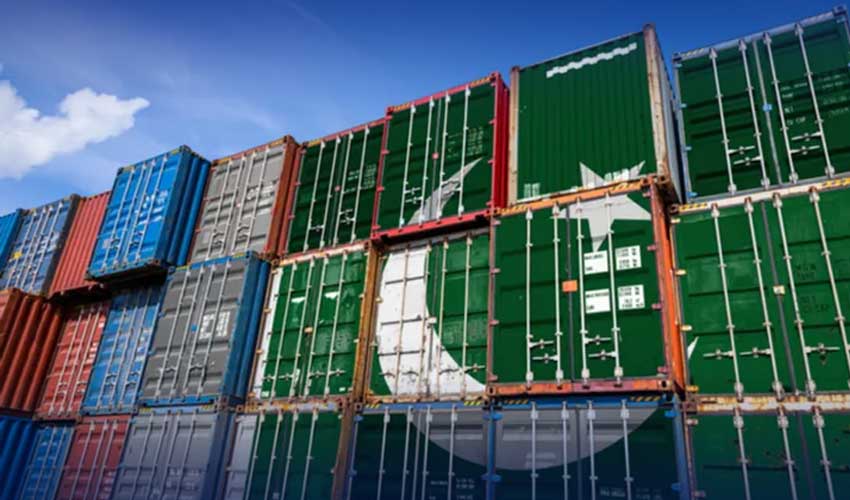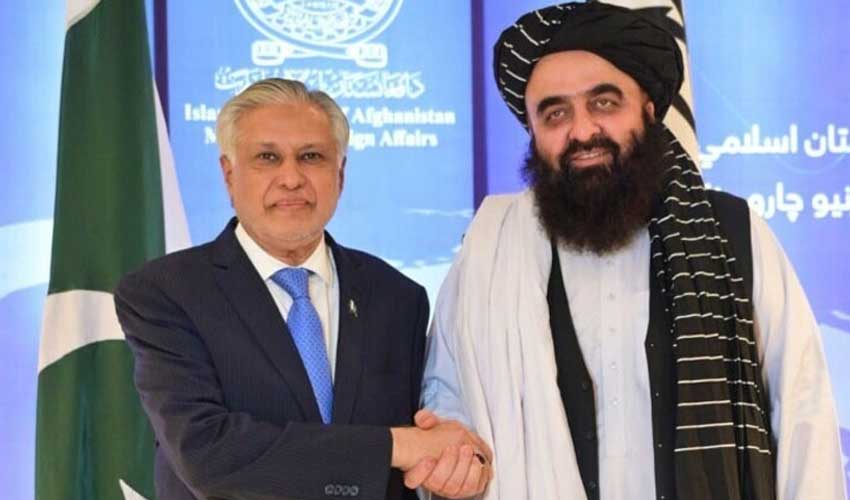The global economic landscape has been radically altered by recent actions of the United States, including US President Donald Trump's move to impose reciprocal tariffs on several countries, including Pakistan.
Although the action had an initial negative impact in Pakistan, particularly in a sharp decline in the stock market, there are developing avenues for Pakistan to make the most of this scenario and enhance its economic relations with the United States.
Trump's tariffs form part of his larger strategy of curtailing the US trade deficit as well as saving local industries. With a 29% tariff imposed on Pakistan's imports now, the business sector had first been worried that this would give the country a serious dent in its export revenues. However, with further inspection, this regime of tariffs is not necessarily bad news; it can provide Pakistan with a comparative edge in certain sectors, notably the textile sector.
Trade dynamics and US market
Pakistan's textile industry is one of the major drivers of the country's export economy, with textiles dominating 77% of its total exports to America. Pakistan's textile and garment exports to America's market have been growing steadily over the last few years. Even with the imposition of new tariffs, there are a number of factors operating in Pakistan's favor that will help cushion the blow and potentially allow the nation to gain share.

Secondly, although the 29% duty on Pakistani imports is steep, it is much less than the duties applied to some of Pakistan's stronger competitors in the global apparel trade, i.e., Bangladesh, Vietnam, and China. Bangladesh and Vietnam, for example, have much steeper duties of 39% and 46%, respectively, so Pakistani products are more competitive than Bangladeshian and Vietnamese products to U.S. consumers. This disparity in tariff levels can benefit Pakistan, giving it the chance to acquire a higher number of orders from U.S. customers seeking competitive prices.
Benefit of lower prices
One of the major reasons why Pakistan can gain from the new tariff regime is its traditional advantage of being able to offer comparatively lower prices for its textiles. Although Pakistan's cost advantage has not yet been reflected in a greater share of the market in the U.S. previously, this change in tariff could put the country in a greater position of importance in the U.S. market. Pakistani exporters will be able to use this lower cost basis to make their products even more appealing to U.S. consumers, who will be likely to look for cheaper alternatives to higher-priced products of other nations, especially China.

China's export of garments to the U.S. is already comparatively costlier than Pakistani products, and with even additional tariffs on Chinese imports, the cost difference may increase further. This cost difference may provide Pakistani products with a relatively wider attraction, thus increasing demand for textiles, home linens, knitwear, and other items that constitute the crux of Pakistan's exports to the U.S.
Opportunities in trade diversion
The increased tariffs placed on rival countries such as Bangladesh and Vietnam may lead to a phenomenon called "trade diversion," in which U.S. consumers divert their orders from higher-tariff countries to Pakistan, which still has a relatively lower tariff rate. This diversion may bring about an increased demand for Pakistani textile goods, particularly as U.S. retailers seek dependable, low-cost substitutes.
Aside from the tariff benefit, this diversion can further be fueled by the intensifying trade war between China and the U.S. With Chinese garment prices increasing owing to increased tariffs, Pakistan would become a lower-cost and attractive supplier to American buyers, thereby gaining a larger percentage of the American textile market.
Strategic govt support and initiatives
In order to take advantage of these new opportunities, strategic planning has been realized as a necessity by the Pakistani government. The government has already initiated measures to enable exporters to cope with this trying period by lowering the cost of energy for commercial customers and providing assistance to those industries affected most, such as textiles, food products, and plastics.

Finance Minister Muhammad Aurangzeb has also stressed that Pakistan sees this tariff scenario not only as a problem but also as an opportunity. He made public intentions to dispatch a high-level delegation to America to negotiate with American officials regarding the issue of tariffs and other areas of cooperation. Such proactive measures may well unlock opportunities for Pakistan to forge closer trade ties with the U.S., particularly in new fields such as strategic minerals, which may provide greater growth opportunities.
Potential for diversification
Pakistan's textile sector is key to its export industry, but the increasing realization has been that its dependence on it alone exposes the country to risks of shifting patterns in international trade. In order to hedge against risks and bring about sustained development, Pakistan must concentrate on the diversification of its export industry. Sectors like leather, surgical equipment, and cement items have immense potential, and the government needs to make concerted efforts to bring in conducive conditions to allow them to grow.
In addition, partnership with American companies in the high-tech industry could offer fresh opportunities for development. The U.S. is interested in further commercial opportunities in Pakistan, and there is ample scope for innovation and technology transfer in sectors such as critical minerals, which would assist Pakistan in building its industrial base.

Although the new tariffs are likely to affect Pakistan's exports in the short run, they also bring with them substantial opportunities for the economy of Pakistan. By capitalizing on its price advantage, benefiting from trade diversion, and pursuing strategic government assistance, Pakistan can reduce the adverse effects of these tariffs. More significantly, Pakistan can come out of this stronger, with a more diversified export base and improved trade ties with the U.S.
The government's pro-active response, as well as sustained investment in industrial innovation, technology, and trade diplomacy, will be essential to making Pakistan best take advantage of the new trade dynamics.
Even though the rising global trade tensions are causing uncertainty, Pakistan's capacity to respond and capitalize on emerging opportunities has the potential to lay the foundation for a more resilient and competitive export sector in the future.



























